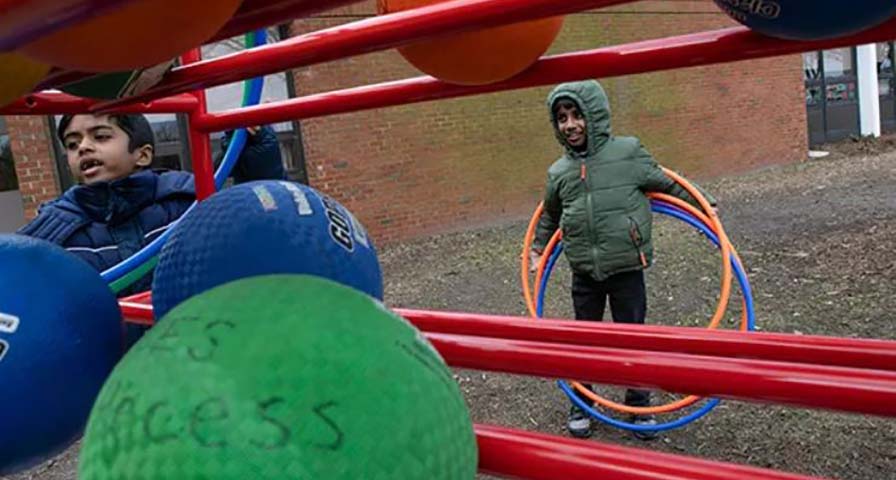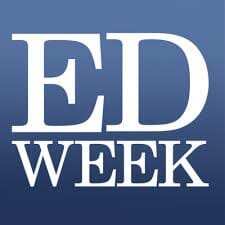Originally published Feb. 25, 2020 in Education Week.
By Alyson Klein
Is it a good idea to trade literacy and math time to give elementary students more time to play?
Virginia Beach City schools–urged on by parents–decided to go for it, hiking the amount of recess the district offered, from just 20 minutes a day to 30 minutes.
 “We had a big push this year to begin to study our elementary school schedule and specifically what opportunities there might be to introduce more play back into the school day,” said Aaron Spence, the superintendent of the 67,000-student district, located on the East Coast. “The research on play is pretty clear, in terms of what it does for the mental and physical well-being of our kids.”
“We had a big push this year to begin to study our elementary school schedule and specifically what opportunities there might be to introduce more play back into the school day,” said Aaron Spence, the superintendent of the 67,000-student district, located on the East Coast. “The research on play is pretty clear, in terms of what it does for the mental and physical well-being of our kids.”
In the past, the district offered 45 minutes of physical education every day for elementary students. That included 30 minutes of structured PE and 15 minutes of unstructured recess. But parents were concerned that that wasn’t “true recess,” Spence said. “The kids couldn’t just go where they wanted and make decisions about what they wanted to do.”
The parents’ perceptions are backed up by experts. “Gym class is no substitute for recess,” said Sarah Lee, a lead health scientist at the U.S. Centers for Disease Control and Prevention, which recommends that all students, not just elementary schoolers, get at least 20 minutes of unstructured time each day. “PE is an academic subject. grounded in curriculum and instruction.”
Recess, on the other hand, gives students a chance not just to move around and to get a brain break but also to “build their social- and emotional-skill set: things like conflict resolution, negotiation, and teamwork.” And, free from adult direction, kids may come up with their own games “so there’s a creativity component to it,” she added.
‘What’s Right for Kids’
What’s more, “when you’re physically active, you have that brain benefit,” Lee said. Recess is “going to allow a kid to extend the energy, activate the brain, and come back into the classroom having more attention and concentration” and the ability to stay on task.
Keeping data like those in mind, the district got serious about reviewing school schedules and held focus groups with teachers, school leaders, and students to figure out the best way to make it happen. Ultimately, to make room for recess, Virginia Beach “shaved a few minutes off” literacy and math blocks, or found time in other parts of the day, Spence said.
That didn’t go over well with some staff members, at least initially, said Kipp Rogers, the district’s chief academic officer.
“It was a mixed bag,” he said. “I don’t think anybody would argue that recess is not a good thing for students.” But principals worried about how they would build a master schedule with the additional time for play. Some teachers wondered how they would make up for lost instructional time. Other educators worried that more unstructured time would offer more chances for bullying—or for kids to get hurt physically.
The district offered professional development to educators on how to help their students make the most of recess, which provides plenty of opportunities for kids to learn skills like conflict resolution and problem-solving. It also gave “recess kits” to schools, complete with such equipment as balls, jump ropes, and hula hoops, to give students an alternative to the playground.
And on that bullying issue—some schools urged teachers to set up “friendship benches” where students can go if they are feeling lonely. Other children are encouraged to sit with them.
Spence’s advice to districts that want to make a similar move: Involve parents, principals, and teachers in the decisionmaking to make sure there is ownership from the beginning.
What’s more, he urges other districts to “stay focused on what’s right for kids. Don’t let the hand-wringing cause paralysis,” he said. “What we found is once we made the decision and said, ‘This is how much we are going to offer,’ all of our principals and teachers got very creative on how to make it work.”
It’s too early for student outcomes to become clear—the district just started implementing the recess expansion this school year. But there’s at least one group of satisfied customers.
“The kids love it,” Rogers said.
Seeking information about IHT’s emotional self-regulation program?




